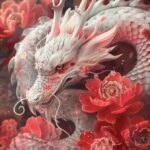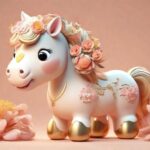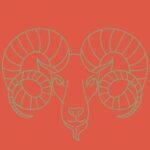In the world of ornamental plants, there are trees that are characteristic of each destiny and age, but there are also trees that are suitable for all five destinies, such as these two trees. At the beginning of the year, plant them in front of your house to attract fortune and luck, helping the homeowner to prosper and become wealthy.
1. Camphor Tree
The camphor tree, also known as the cinnamon flower, is highly valued in both feng shui and traditional medicine, often commanding a high price, especially for older trees that can be worth billions of dong.
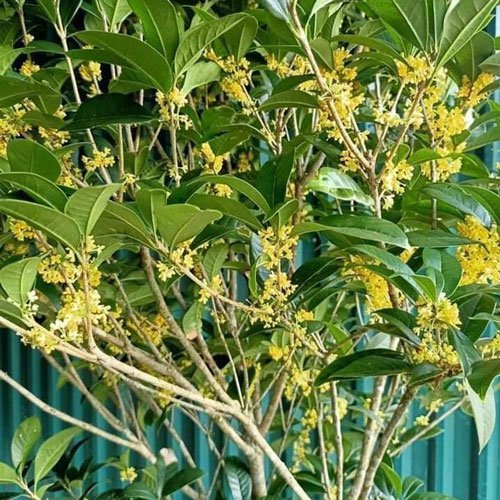
The camphor tree has a small trunk, growing to a height of 3-12m, with many branches that spread widely around it. Its leaves are thick, oval-shaped with serrated edges, and a deep green color with prominent veins. The tree bears very fragrant flowers that bloom year-round, especially in the fall when it’s in full bloom, releasing a captivating scent. The flowers grow in clusters and come in shades of white and light yellow. The tree produces very few fruits, which are small, green, and seeded, usually blooming in the spring.
The camphor tree’s unassuming appearance may not be as flashy as other plants, but its fragrance adds a unique, rustic charm. The soft colors of its flowers and their strong scent have inspired the folk saying, “The color of tea, the scent of camphor,” reflecting the hardworking and modest nature of the Vietnamese people.
Placing a camphor tree inside your home is believed to attract good fortune and wealth for homeowners of all five elements in the five elements theory. However, the yellow and white flowers of the camphor tree are particularly suitable for the Kim (Metal) element.
The camphor tree is believed to bring good luck to those of the Kim element born in the following years: Nhâm Thân (1932, 1992), Quý Dậu (1933, 1993), Canh Thìn (1940, 2000), Tân Tỵ (1941, 2001), Giáp Ngọ (1954, 2014), Ất Mùi (1955, 2015), Nhâm Dần (1962), Quý Mão (1963), Canh Tuất (1970), Tân Hợi (1971), Giáp Tý (1984), Ất Sửu (1985).
2. Golden Money Tree
The Golden Money Tree is a popular feng shui plant, beloved for its auspicious meaning. Its trunk is flexible and twists together like a girl’s braid, earning it the nickname, “braid tree.” Under favorable growing conditions, it can reach heights of up to 20m, but when grown in pots, it typically grows to 2-6m.
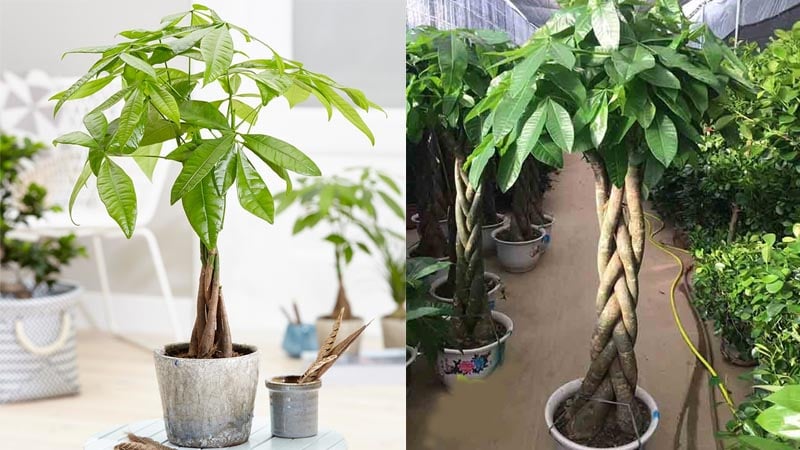
The flowers of the Golden Money Tree are usually a pale cream color, with large petals and a subtle, pleasant fragrance. They bloom from April to November, mainly at night. Although it rarely flowers, when it does, it is considered a sign of good luck, bringing wealth and prosperity to the homeowner. Its leaves are large, a vibrant shade of green, and spread out like an open palm, with a long, oval shape and a slightly blunt tip, narrowing towards the stem.
In Chinese, “kim” means money or gold, while “ngân” refers to a treasury or bullion. Together, the name “Golden Money Tree” suggests an abundance of wealth that will only increase over time. Additionally, the tree’s sturdy, upright stance symbolizes resilience and unity in the face of adversity, while its lush, vibrant leaves represent good fortune and a strong life force.
The Golden Money Tree is suitable for all five elements because its leaves stay green year-round, spreading out in five directions, representing the balance of the five elements: Metal, Wood, Water, Fire, and Earth.
The number of Golden Money Trees planted in a pot also holds different meanings:
– A pot with one Golden Money Tree, featuring a thick trunk, is known as the “heavenly pillar” and signifies strength and determination.
– A pot with three braided Golden Money Trees represents “fortune, luck, and longevity,” symbolizing the enduring unity of these three blessings.
– A pot with five Golden Money Trees symbolizes the five elements of “fortune, luck, longevity, peace, and health,” or alternatively, the five elements of “metal, wood, water, fire, and earth,” bringing balance to the energies and harmony to the family.



























